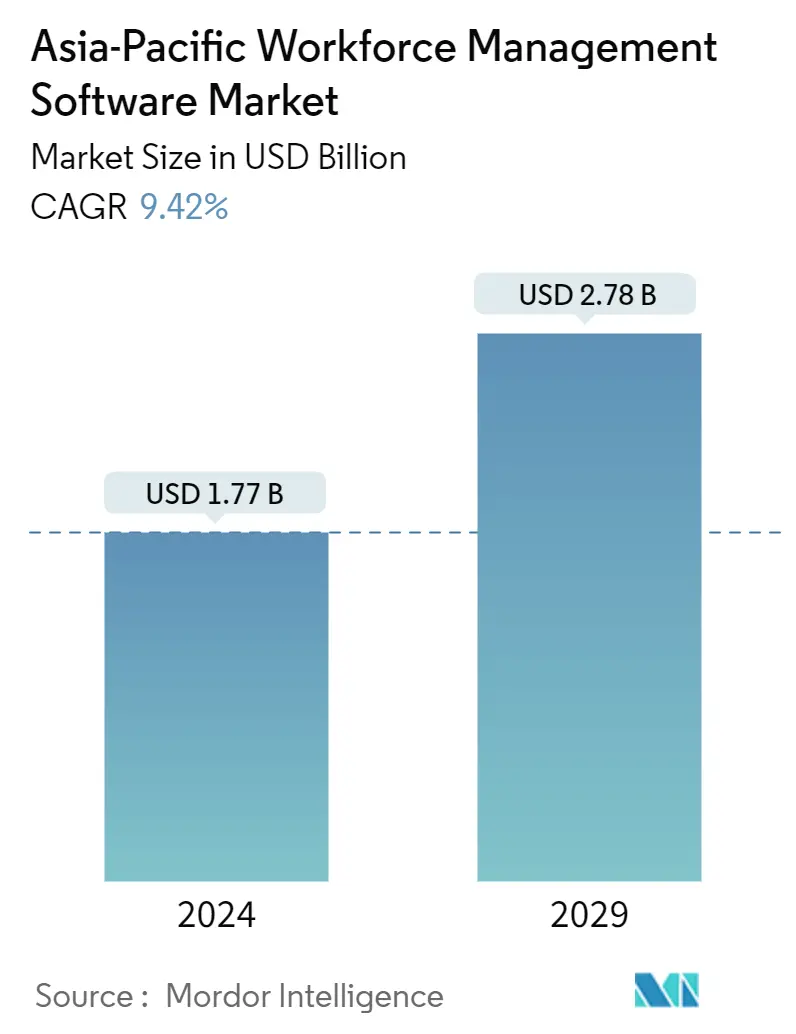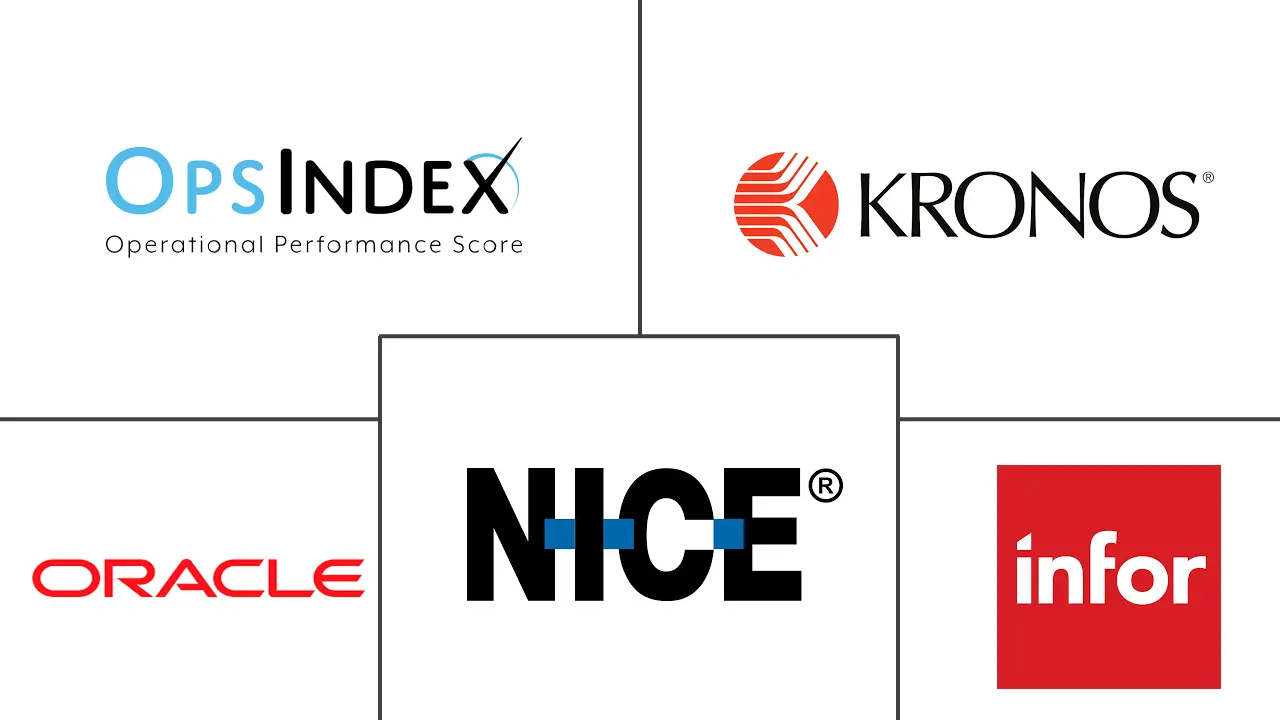Market Size of Asia-Pacific Workforce Management Software Industry

| Study Period | 2019 - 2029 |
| Base Year For Estimation | 2023 |
| Market Size (2024) | USD 1.77 Billion |
| Market Size (2029) | USD 2.78 Billion |
| CAGR (2024 - 2029) | 9.42 % |
| Market Concentration | Low |
Major Players
*Disclaimer: Major Players sorted in no particular order |
Need a report that reflects how COVID-19 has impacted this market and its growth?
Asia-Pacific Workforce Management Software Market Analysis
The Asia-Pacific Workforce Management Software Market size is estimated at USD 1.77 billion in 2024, and is expected to reach USD 2.78 billion by 2029, growing at a CAGR of 9.42% during the forecast period (2024-2029).
By allowing effective administration of work schedules, business processes, labour costs and talent management, workforce management software has an important role to play in improving organisational performance.
- The Asia Pacific region is one of the world's largest producers of goods, and this is due to its position as a major exporter. Different products are manufactured by India, China, South Korea, Indonesia, Japan, and Australia. The region is known for its skilled labour. It's known for software, cars, food production, medicines, cosmetics, machinery, clothes and many other products produced here. The workforce is very critical in terms of production and advanced capabilities.
- Employees are increasingly using self service technologies, which can be reached from any location and with no major obstacles, as a result of increasing use of automation based processes. Such technologies are enabling more transparency and communication in the workplace, while preserving a chain of command.
- In the field of workforce management software, use of AI is also becoming more widespread. Several businesses are using artificial intelligence to reduce the time consuming tasks, such as recruitment and hiring, planning and tracking times.
- There are millions of physicians, engineers, technicians, etc. in this region. Converting such a large number of educated workers into a skilled workforce requires a management system. The key to success in any organization is productivity. Enterprises and industry are working towards cost reduction, productivity improvement as well as improving business process efficiency. In order to achieve this objective, they adopt more sophisticated technologies.
- The focus of most software-as-a-service evaluation revolves around measuring feature set against any current problem areas and finding a vendor for working well with. However, the implementation of new workforce management software can be an expensive and time intensive process that must be carried out without delay in order to make full use of the benefits which any organisation is seeking.
- COVID-19 has pointed out the importance of WFM solutions in a variety of sectors, especially for healthcare workers. The need for some good practice to keep nursing staff engaged has been highlighted and, while offering the healthcare sector a range of WFM solutions, applications like scheduling tasks and predicting censuses, scheduleting and staffing nurses on time as opposed to parttime workers have also been underlined.
